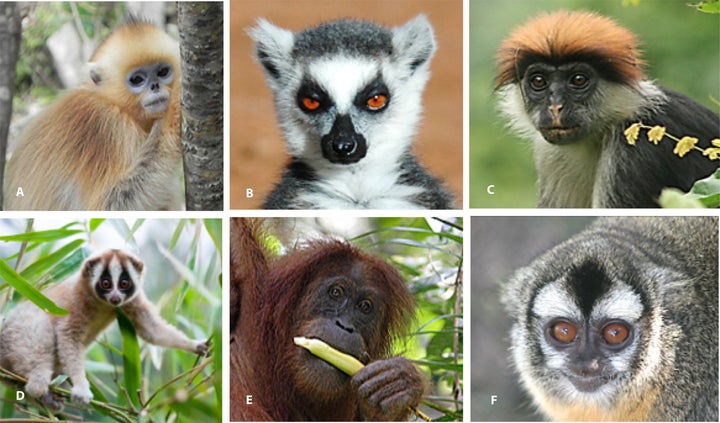The future looks extremely ominous for gorillas, monkeys and other primates, unless humans make huge shifts in their current behavior, a new study warns.
Roughly 60 percent of the 504 species of primates, which are mankind’s closest biological relatives, are threatened with extinction, according to the study published Wednesday in the journal Science Advances. Three-quarters of primates have declining populations, the study said.
“Unsustainable human activities are now the major force driving primate species to extinction,” said the report.
The projected growth of the worldwide human population ― from 5.1 billion to 7.3 billion between 2010 and 2050 ― will unleash dramatic pressures on chimps, gibbons and lemurs, who will struggle to survive.

The biggest threat is the destruction of their natural habitat, like the Amazon rainforest and other jungles, for farming and ranching. Expanding agriculture threatens 76 percent of primate species, according to the researchers. Sixty percent are threatened by logging. The demand for bushmeat is one factor that makes 60 percent of primates imperiled by hunters and trappers.
“Considering the large number of species currently threatened and experiencing population declines, the world will soon be facing a major extinction event if effective action is not implemented immediately,” wrote the team of 31 scientists.
Primates primarily inhabit forested areas and naturally exist in 90 countries. Yet two-thirds of all primate species are concentrated in Brazil, Indonesia, the Democratic Republic of Congo and Madagascar.
The map above shows the areas where primates’ numbers are most jeopardized. The picture is especially bleak in Madagascar, where researchers concluded that 87 percent of the species are threatened with extinction. In Asia, 73 percent are threatened, and in mainland Africa, 37 percent are threatened, the report said.
Time is almost completely up for the Hainan gibbon. There are only 30 of that type of ape left in the wild in China, USA Today reported.
The loss of species can lead other parts of an ecosystem to break down. The hunting of a type of gibbon found in Thailand has had a “negative effect” on a type of tree that depends on the gibbon to disperse its seeds, according to the report.
The study follows previous dismal wildlife assessments that warned of catastrophic futures for many primates, such as the most evolutionally advanced, the great apes. Four of the seven species of great apes, which include gorillas, orangutans and humans, are listed as “critically endangered” by the International Union for Conservation of Nature.
Even as the overall numbers plummet, scientists regularly identify new species. Announcements about the discoveries of seven species are expected this year, The New York Times reported.
To protect primates from extinction, it’s necessary to implement sweeping changes to human behavior. Lowering the birth rate, combating poverty and inequality and improving public health would relieve some of the forces pushing primates to the brink.
Increasing the size of animal sanctuaries and protected areas should be a worldwide goal too, but the report noted that countries in Asia, Africa and the Americas are scaling back wildlife refuges.
“The goal of this review is not to produce a list of threats but rather to urge attention to the multiple global and regional anthropogenic factors that imperil primates worldwide and to encourage the development of sustainable and effective solutions that enhance primate survival in the medium and long term,” the study says.
